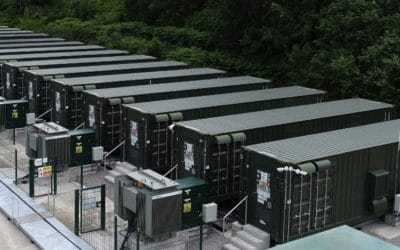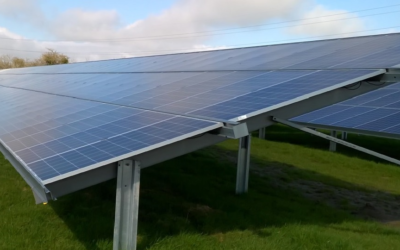By Phil Wiltshire, Trading Manager at Anesco
In the UK, with ancillary services being the centrepiece of battery energy storage (ESS) business cases, it is easy to overlook the significance of keeping a vigilant eye on all available market opportunities, to identify the true market value.
While the clearing price of National Grid’s Dynamic Containment auction has continually been reaching the price cap at £ 17 / MW / h, for the previous two weeks wholesale prices have consistently provided opportunities of at least twice that value, revealing the true market value of battery ESS during these times of system fragility.
Here, at Anesco’s Revenue Optimisation team, we have been vocal about this divergence, pushing for action to capture charge discharge spreads of £800/MWh to £1000/MWh from the wholesale market where practical.
But isn’t the recent system fragility abnormal? We don’t see prices like this very often, and at the time of writing prices have since relaxed to high but much calmer and less appealing levels for battery optimisers.
So, why is this important to the larger business case of batteries?
We see the recent events as a signal of what battery operators and owners must consider in the coming year.
New and unusual often look the same
As the UK’s continues its drive towards net zero carbon, we are moving deliberately towards a more fragile grid with more renewables and less physical inertia from fossil fuel thermal generation. The advent and rapid development of battery ESS is a critical part of synthesising a replacement for much of that grid integrity.
Over the past few weeks, we have seen low wind generation, a reliance on coal, lower nuclear availability and significant difficulties with interconnectors. Considering that going forward we have a market reliant on re-emerging trade deals with power markets in Europe, without the physical security of coal and with a system blowing in the wind more than ever; the possibility of a regular recurrence of extreme pricing and volatility is not trivial.
We have also recently seen three Electricity Margin Notices issued by National Grid ESO, indicating the gap between generation capability and demand being a little too close for comfort. The last time we encountered such notices was a single lone notice issued in 2017.
While not new, the events of the past few weeks have shown pitfalls relating to how this translates to the value of the new Dynamic Containment product, and how it would currently stack up if the extremes become more of a common and important characteristic of the market landscape.
Competitive markets for batteries and consumers
Dynamic Containment is still new to all of us and since launching in 2020, has only been available to a select few participants with pre-qualification. It has opened up the shortest horizon for ancillary services in the battery optimisers’ arsenal, being a daily auction, and is one of many sources of optimism among battery ESS projects in the UK.
However, prices have consistently bumped up against a cap of £17 / MW / hour availability in recent weeks, suggesting a price out of intervention not equilibrium. If the appetite for Dynamic Containment is mis-valued then the competitive actions of market participants should redirect resources to more economically justified activities, and this should shake out the inefficiencies between the two values and encourage alignment where the grid needs it.
More significantly, reluctance or the inability of battery operators to follow the market would be an endorsement of the current cap and the independence of Dynamic Containment from other revenue streams for batteries.
Higher caps enable us to arrive at a market and risk reflective price in extreme conditions for Dynamic Containment and give batteries and National Grid a safer route to navigating high stake conditions in future. However, the road to this increased efficiency is due pressure, in consultation and re-enforced in the markets.
What this means for battery owners
At Anesco, we have every faith that Dynamic Containment and other revenue streams will continue to grow both in value and sophistication, ironing out any inefficiencies. Dynamic Containment is a new and exciting opportunity. But for us at Anesco, we believe battery optimisers engagement on all fronts is key to this process. As such, our optimisation team is active in three key areas:
- Continuously developing our functionality to capture competing opportunities through having a wide route-to-market for ancillary services and wholesale power markets; giving us the tools to push for a better outcome.
- Using our team’s decades of experience in the energy sector and our expertise in trading to continuously improve our ability to forecast, evaluate, and identify new opportunities and assess them against our customer’s risk appetite and strategic aims; giving us the insight to know when to push for a better outcome.
- Using our organisation’s broad experience in the battery ESS space, from project development, O&M, EPC, through to revenue optimisation, to represent our customers and industry at consultation events relating to the battery revenue stack; helping create a better outcome for both battery owners and the end Consumer.
For more information about how Anesco’s Revenue Optimisation team can help your business navigate the ever-changing Battery ESS markets and gain more from its investments, visit: Revenue Optimisation – An all-in-one solution – Anesco






